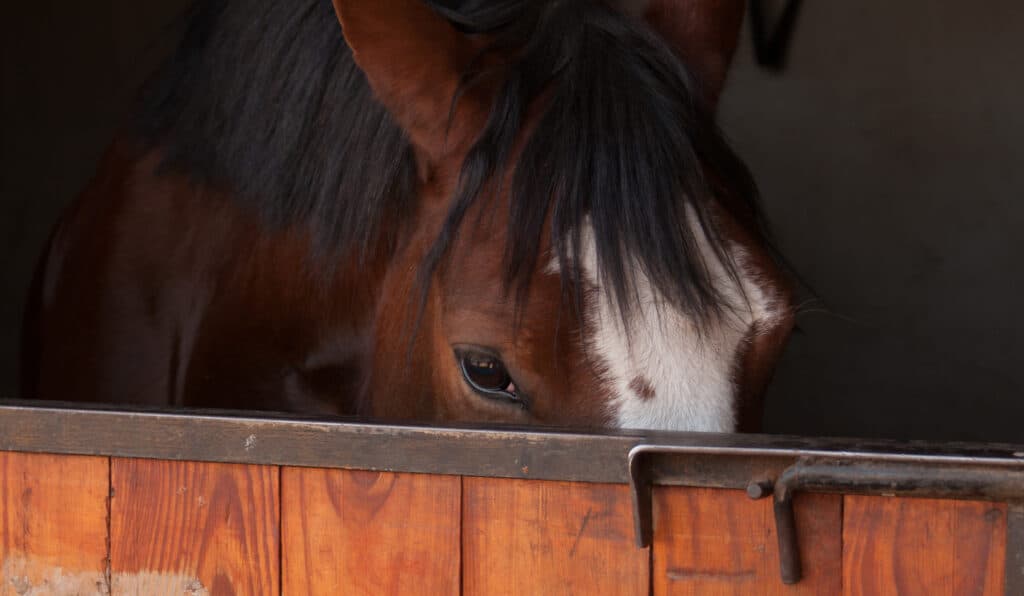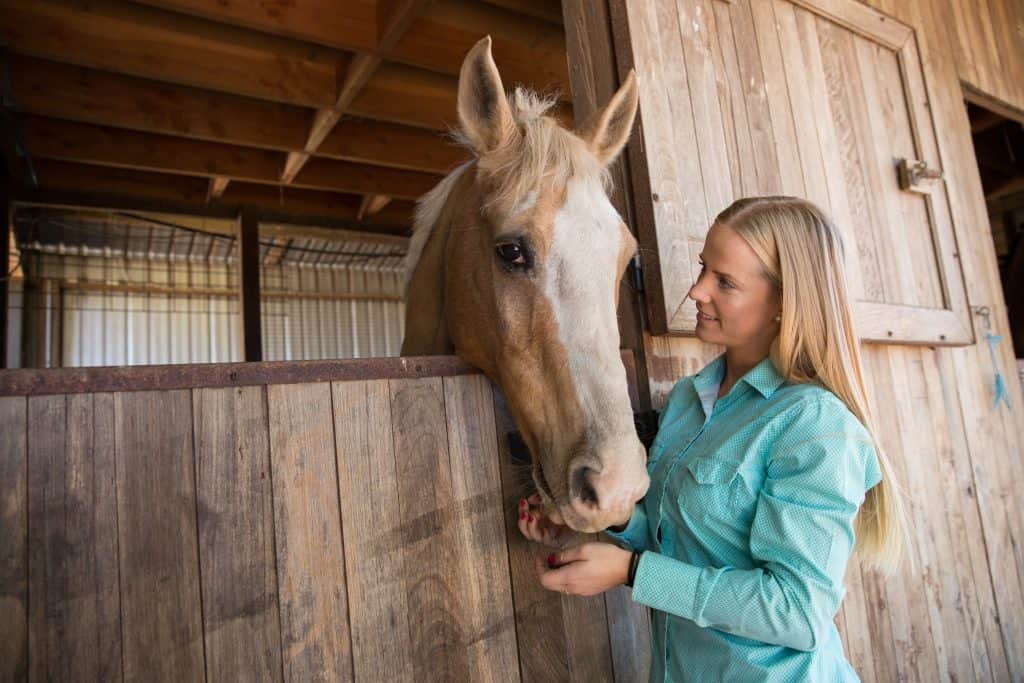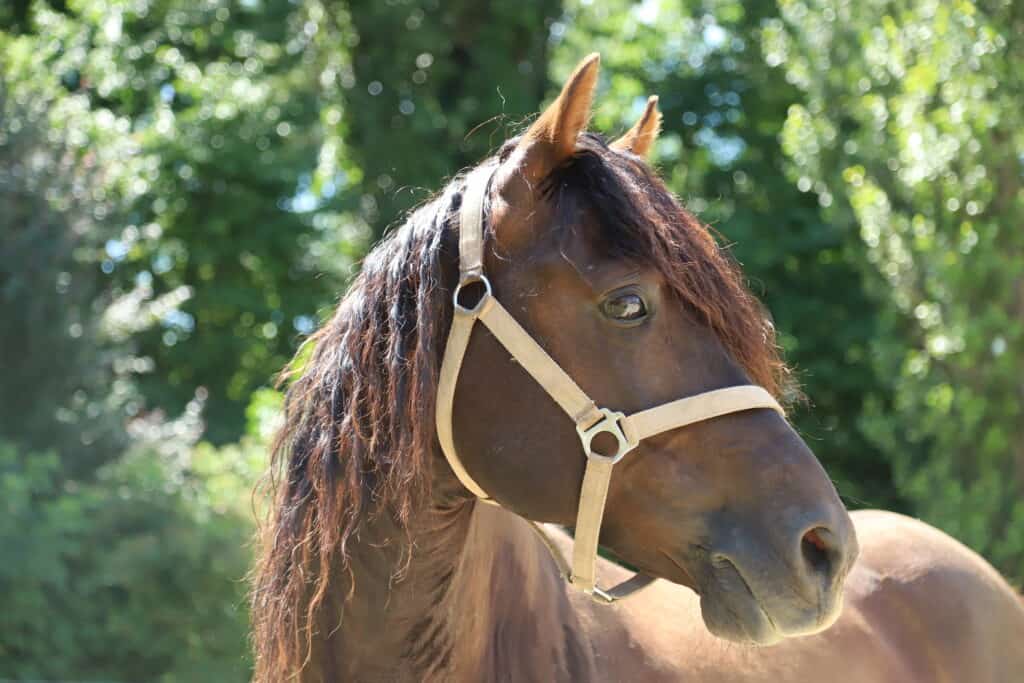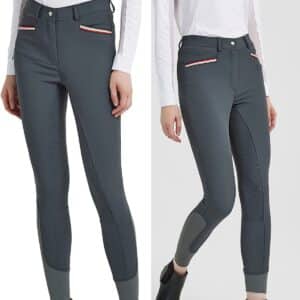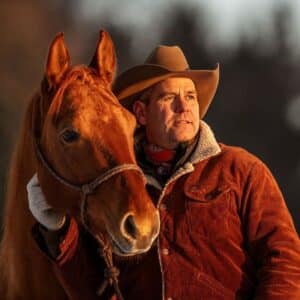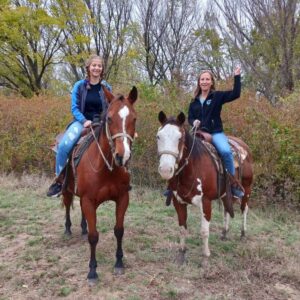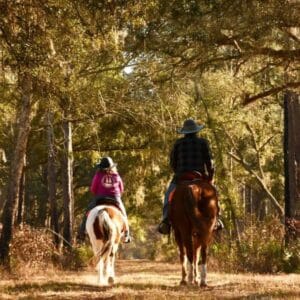Do you have a horse that is skittish about everything? Perhaps it is a young horse or one that has been rescued from a situation of neglect or abuse. There are ways to build a horse's confidence. Patience, positive leadership, and time are the key ingredients. Don't forget to talk with your horse also. Something as simple as sitting outside their stall and telling them about your day can help build a relationship. The stronger the relationship, the easier it will be to build your horse's confidence in the world around them.
Positive Leadership
The first step to building a horse's confidence is firm, positive leadership. Horses need to trust that their leader will not put them in situations that will hurt them. They also need to believe that there isn't any reason to be afraid if their leader isn't afraid. Think of it like a child that is afraid while walking down a busy street. He grabs on to his parent's hand, and things don't seem so bad. The child trusts his parent's leadership and ability to keep him safe. We want our horses to have that same trust in our leadership.
The first step to building this leadership is to control when and where the horse moves its feet. In the herd, the leaders tell the others when and where they can move. For decades, trainers have been using this theory and applying training techniques to build a positive leadership role with horses. It may be called round pen reasoning, the first step of foundation training, or joining up. They all have the same desired results of getting a horse to look at the trainer as the leader.
This leadership has to continue outside of the round pen. It is crucial that we don't let our horses push us around. We may want to think, "Oh, he is just showing me affection." But horses are enormous animals that can hurt us in a heartbeat. Always make your horse respect your bubble. There is a time for pets and loves. However, you need to be the one to instigate the loving, not the horse. All horses, especially abused horses, need love and attention, but MOST of all they need and crave positive leadership.
Horses that don't want to be haltered
Abused horses will often not want any human touch. After you have established a leadership role with the horse, you can start building his confidence in the world around him. Start with accepting a halter. You have to be able to touch their face to put on a halter.
You can spend time with the horse outside his stall, trying to coax him to you. This can be successful, but it will take much longer than needed. It is better to combine spending time with the horse and use leadership lessons to accept the halter and your touch.
Use a round pen or small corral for this lesson. Do not have the halter or lead in your hands. Just the sight of them might be enough to keep an abused horse from coming to you. After the horse decides to come up to you in the round pen, rub on the bridge of his nose. If he takes off, let him move at a trot or lope around the round pen. Ask him to stop. It is vital that you chose the stopping point and not the horse.
- If you let the horse chose the stopping point, the horse learns: 1. I can run away from the things I don't like. 2. The trainer isn't the leader; I am. (Horses will challenge this often.)
- If you chose the stopping point, they learn: 1. The trainer is the leader. 2. Running away was work; it would be easier to listen to my leader. (This lesson will be beneficial when they are being ridden and come across objects that are new and scary.)
Keep repeating this until the horse lets you rub all over his face. At this point, you only want to touch behind the ears where the halter will lay. Abused horses will often be very touchy about their ears. Abusers are known to twist or bite down on a horse's ears as a way to control them.
After you can rub the horse all over his face, you want to get him to let you put the lead rope over his neck. Use the same technique as you did with rubbing the face. Teaching him to accept the lead rope over his neck will lead to you putting your arm over the horse's neck to put on the halter. Using a lead rope first can save you some doctor bills and aggravation.
After you can rub the horse all over his head and put your arm over his neck, you want to put on the halter. Have the horse turn his nose towards your chest as you do this. This position does two things. It shows the horse is giving you respect and willingness to work with you. Also, it makes your job easier. When their nose is turned away, they are not showing complete respect. It is advisable to return to a leadership lesson and come back to haltering if the routinely turn their head away.
These are just the first steps to building a horse's confidence. The most important step is to establish a POSITIVE LEADERSHIP role. Then use this role to teach your horse that you will not lead them into something that will hurt them. Instead, you will take care of their every need and keep them safe. The stronger the relationship is, the easier it will be to build your horse's confidence in the world around him.
Horse Courses by Elaine Heney
- Listening to the Horse - The Documentary by Elaine Heney & Grey Pony Films
- Shoulder In & Out Training for better balance, bend & topline development with your horse
- Over 110+ Polework Exercises & Challenges to Download
- Dancing at Liberty & Creating Connection with Your Horse (11 lessons) - Grey Pony Films
(This article is part one of a three part series on building confidence in your horse—stay tuned!)

